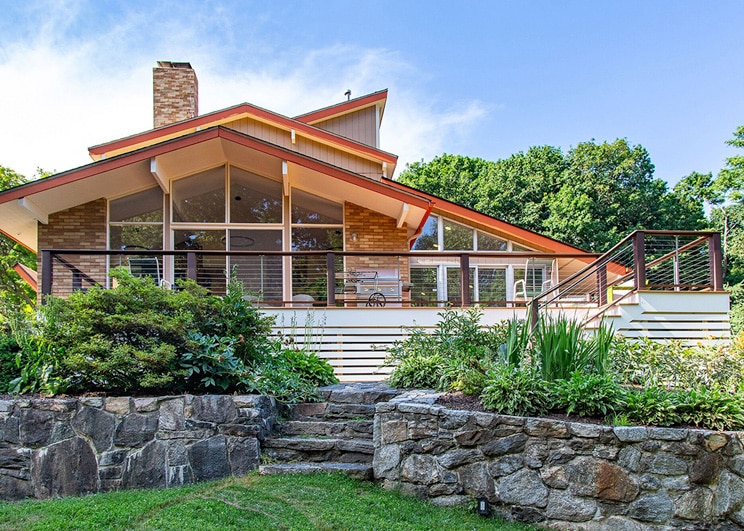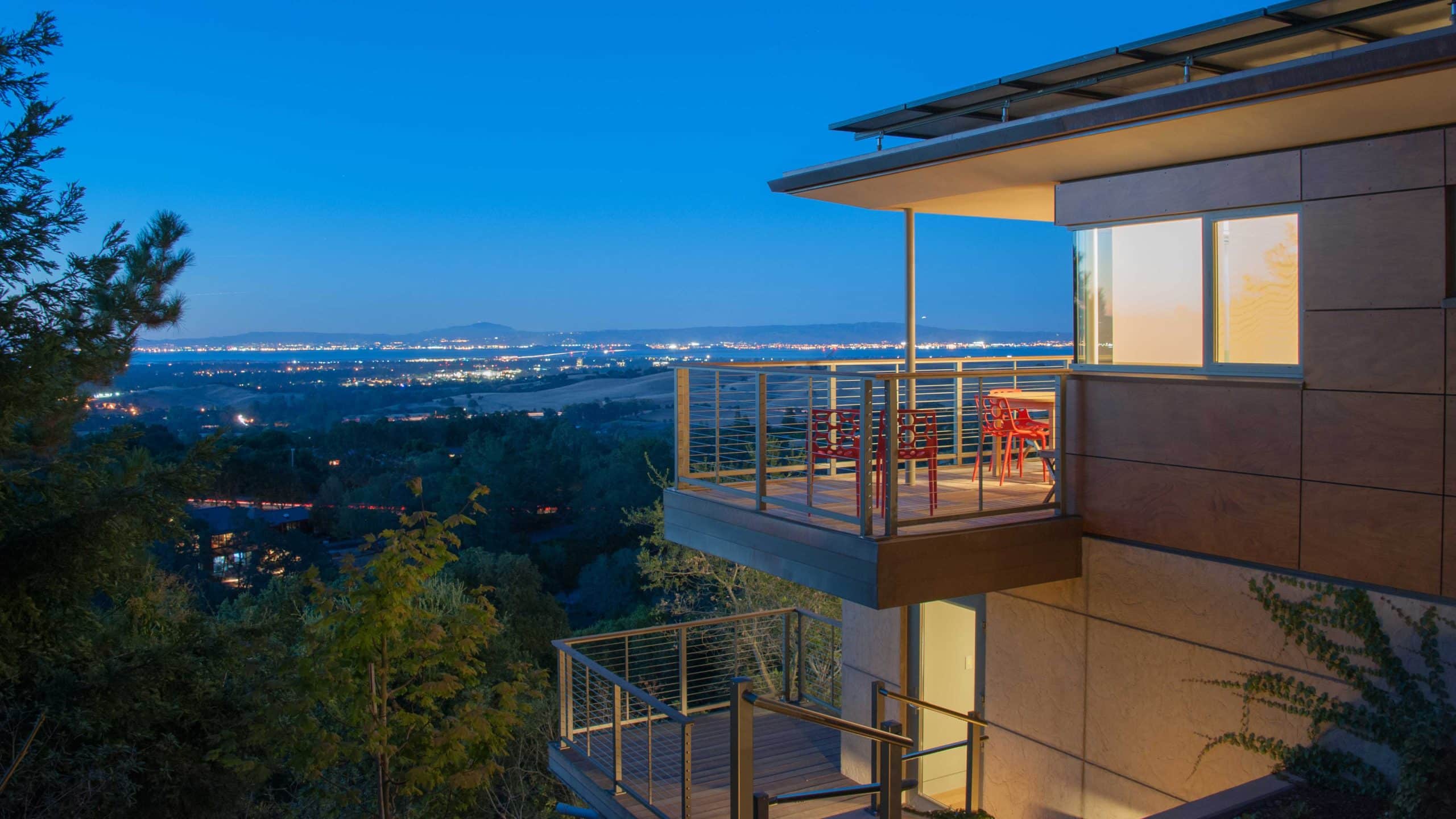Updated Tips for Creating Functional, Beautiful Outdoor Spaces
Today’s homeowners expect more from their outdoor living spaces. From multitasking layouts that blend work and play to eco-conscious materials with low-maintenance finishes, decks are now true extensions of the home. But as demand for personalized and purposeful outdoor areas grow, so do the design challenges. The following are three smart ways to outthink the most common hurdles in 2025, for building a referral-worthy deck and getting the edge on your competitors.
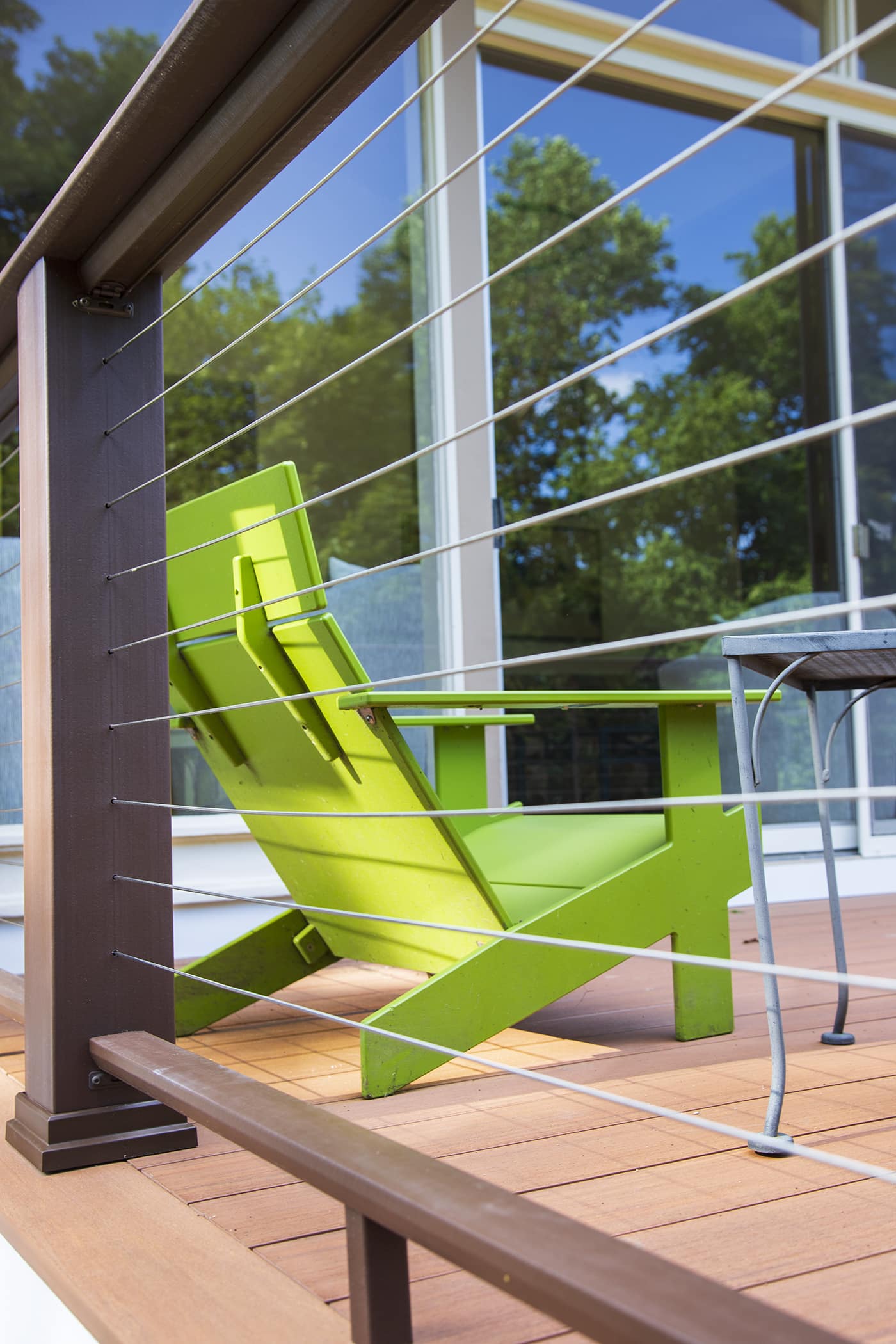
Challenge 1: Limited Space, Big Expectations
Solution: Think Vertically and Visually
Even in compact footprints, outdoor spaces can feel expansive with the right approach. Vertical gardens, modular furniture, and built-in seating maximize utility without overwhelming the layout. Feeney® Cable Trellises are a stylish and space-saving way to bring greenery to walls, posts and fences, adding natural beauty without taking up precious floor space.
While it’s true that a deck can overpower a smaller yard space, there are ways to address that concern. A more streamlined railing infill, like Feeney’s CableRail, offer clear sightlines that make small decks feel more open—while adding a touch of modern sophistication.
Key Takeaway: Design smarter, not bigger—maximize small spaces with vertical solutions and open-view railing systems that expand both functionality and aesthetics.
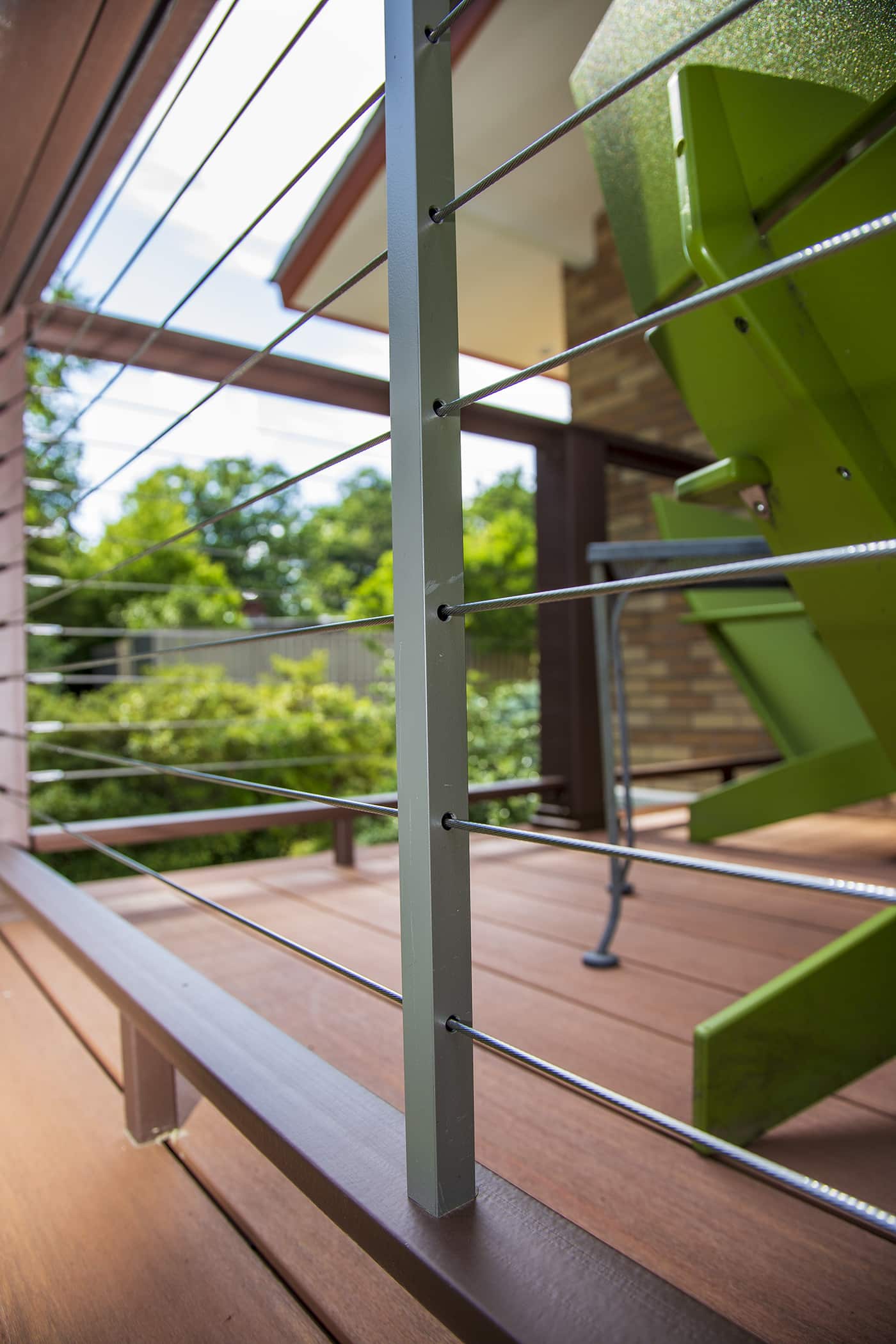
Challenge 2: Mixed-Material Confusion
Solution: Embrace Coordinated Contrast
In 2025, design-forward decks are embracing a mix of materials, whether it be wood, metal, composite, or stone. The key is cohesion. Look for railing systems like Feeney’s DesignRail® Custom that offers a broad range of colors, finishes, and infill options to seamlessly blend into your vision.
Tools like the Feeney VisualBuilder can help you experiment with combinations and ensure your design reflects your personal style before making final decisions.
Whether you’re pairing a warm hardwood with a bold black aluminum frame or matching your railing to window trim, an integrated aesthetic ties the whole space together.
Key Takeaway: Mixed materials work best when grounded in a clear design vision—use visual planning tools to get it right before you build.
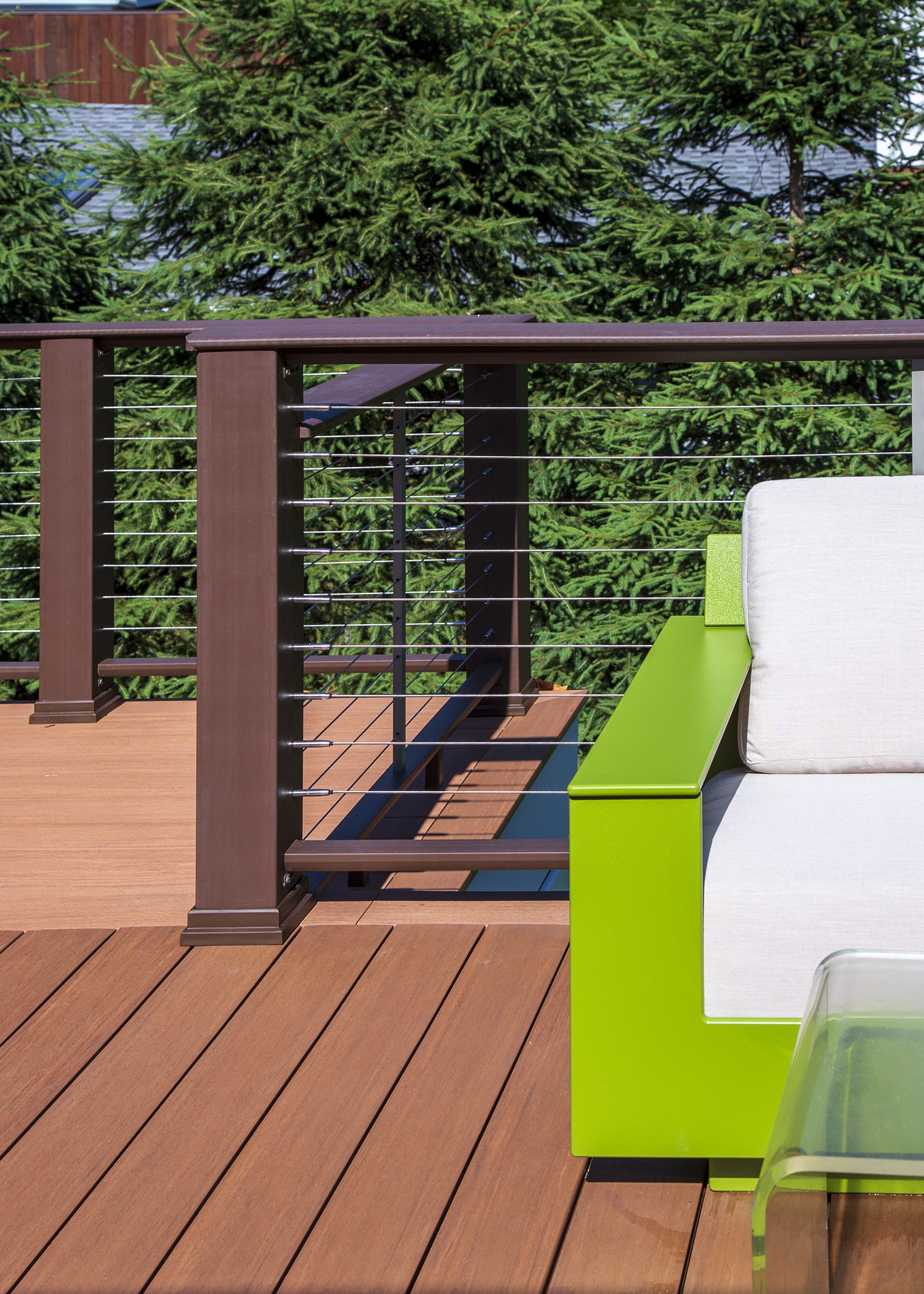
Challenge 3: Views, Safety and Codes
Solution: Don’t Compromise-Customize
Understandably, many homeowners want the best of both worlds; a railing that preserves the view and meets local safety codes. But what about taking code a step farther. While it’s critical to meet minimum code requirements when building a deck, that may not be good enough, especially since many home inspectors are becoming more vigilant when it comes to deck safety.
When inspectors do identify a deck defect, it isn’t necessarily a simple failure to comply with code but frequently the ignoring of best practices, or DCA 6-15, which is the standard for wood deck building.
Learn more about deck building best practices in the Prescriptive Residential Wood Deck Construction Guide.
Key takeaway: Don’t choose between beauty and safety. Modern railing solutions make it easy to achieve both with confidence.
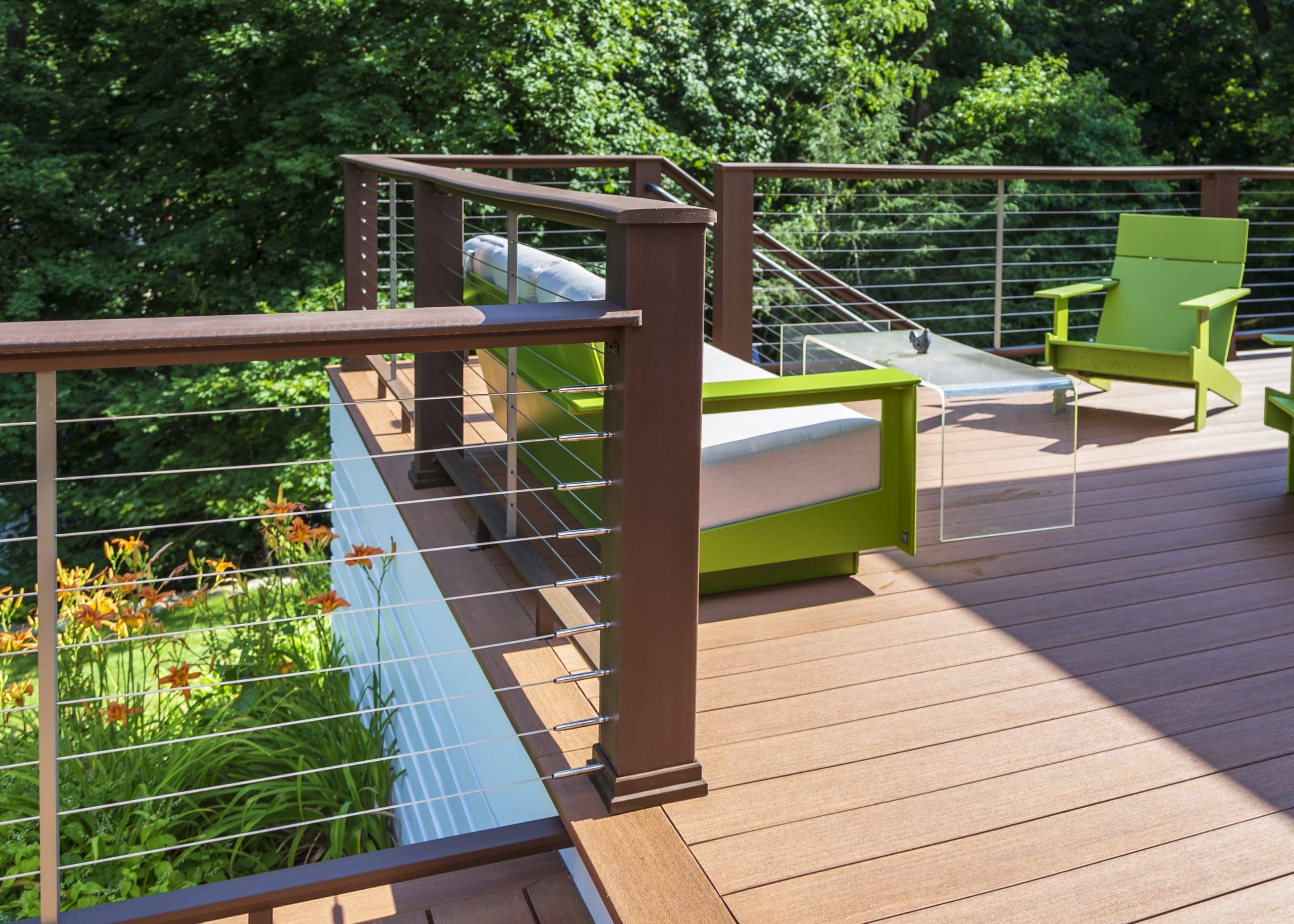
Deck building is constantly improving, and manufacturers continue to introduce new materials, practices and ways of doing things.
Need help choosing the right railing for your next project? Contact the Feeney team for expert support and product guidance.

